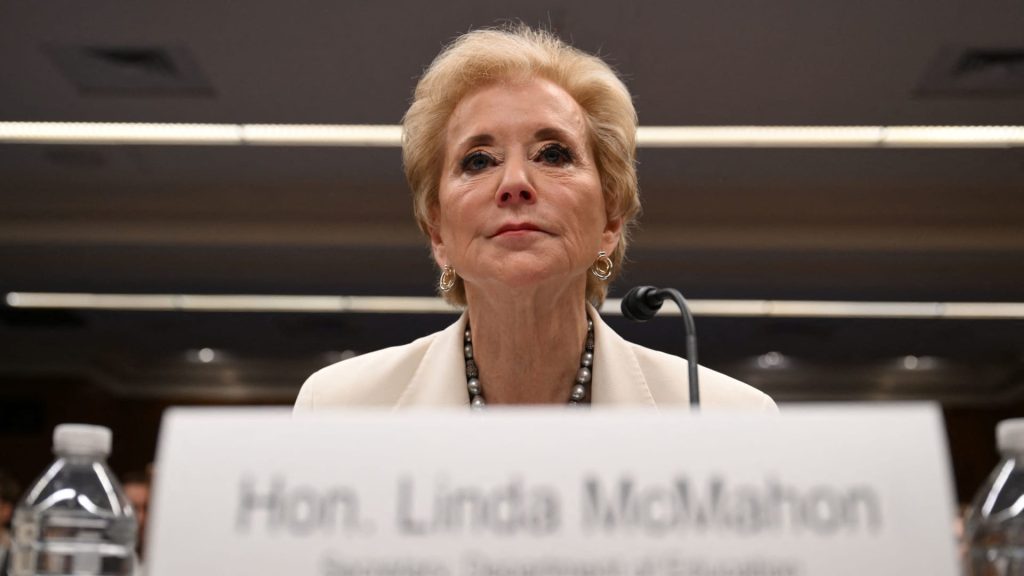U.S. Secretary of Education Linda McMahon attends to testify before a Senate Appropriations hearing on U.S. President Donald Trump’s budget request for the Department of Education, on Capitol Hill in Washington, D.C., U.S., June 3, 2025. REUTERS/Annabelle Gordon
Annabelle Gordon | Reuters
An interest-free payment pause on student loan bills that has benefited millions of borrowers has come to an end.
Starting Friday, borrowers who remain in the so-called SAVE forbearance will see their education debt grow again if they don’t make payments large enough to cover the accruing interest.
“Any borrower enrolled in the SAVE Plan needs to start thinking about their next step,” said Elaine Rubin, director of corporate communications at Edvisors, which helps students navigate college costs and borrowing.
Here’s what to know about the end to the reprieve.
Why the SAVE interest-free pause is ending
The Biden administration rolled out the Saving on a Valuable Education, or SAVE, plan in summer 2023. The federal student loan repayment plan’s terms were the most generous to date; under its rules, many borrowers’ monthly bills would have dropped by as much as half.
Nearly 7.7 million federal student borrowers enrolled in SAVE, the Education Department said in its press release last month.
More from Personal Finance:
Trump’s ‘big beautiful bill’ includes these key tax changes for 2025
Student loan bills to double for some borrowers as Biden-era relief expires
What a Trump, Powell faceoff means for your money
But just as many of the plan’s benefits were going into effect, Republican-led legal challenges blocked the program. Unlike the Biden administration, Trump officials have not fought in the courts to preserve SAVE, and recently, Congress repealed the plan altogether.
The Trump administration has called the SAVE plan illegal. In a July 9 announcement ending the interest-free pause, it said the U.S. Department of Education “lacks the authority to put borrowers into a zero percent interest rate status.”
Borrowers enrolled in the forbearance will not be charged interest retroactively, the department said.
(CNBC spoke to one borrower who did see interest accrue on her debt during the break, so check your balance to make sure that didn’t happen to you.)
Staying in forbearance could be costly
While borrowers can stay in the forbearance, at least for now, doing so will be costly with interest accruing again as of Aug. 1.
A typical borrower could see their federal student debt grow by $219 a month in interest charges alone if they stayed put in the payment pause, according to calculations from higher education Mark Kantrowitz.
That assumes they owe the average outstanding federal student loan balance of around $39,000, and have the average interest rate of roughly 6.7%.
Another plan will likely mean a higher bill, though
Most borrowers will be better off quickly finding a new repayment plan, experts said.
Most agree that the best option at the moment is the Income-Based Repayment plan. IBR, like SAVE, is an income-driven repayment plan that caps borrowers’ monthly bills at a share of their discretionary income, with the aim of making payments affordable.
IBR may be one of a dwindling number of repayment options left to borrowers, after recent court actions and the passage by Congress of President Donald Trump’s “big beautiful bill.” That legislation phases out other income-driven repayment plans.
The new law establishes another IDR repayment plan, known as RAP, but that plan won’t be operational until next year. And for now, most borrowers won’t be able to afford the bills under the currently available Standard Repayment Plan, which divides your debt into fixed payments over a decade.
But even borrowers who enroll in IBR could have their monthly bills double, compared with on SAVE.
That’s because the SAVE plan calculated payments based on 5% of a borrower’s discretionary income. IBR takes 10% — and that share rises to 15% for certain borrowers with older loans.
Still, very low-income borrowers could have a monthly bill of just $13 under IBR.
There are tools available online to help you determine how much your monthly bill would be under different repayment plans.
Borrowers worried they can’t afford their monthly payments should also see if they are eligible for any payment pauses where interest still won’t accrue — such as the unemployment deferment if you have direct subsidized loans. (Those who’ve taken out loans before July 1, 2027 should maintain access to that option under the new law.)

